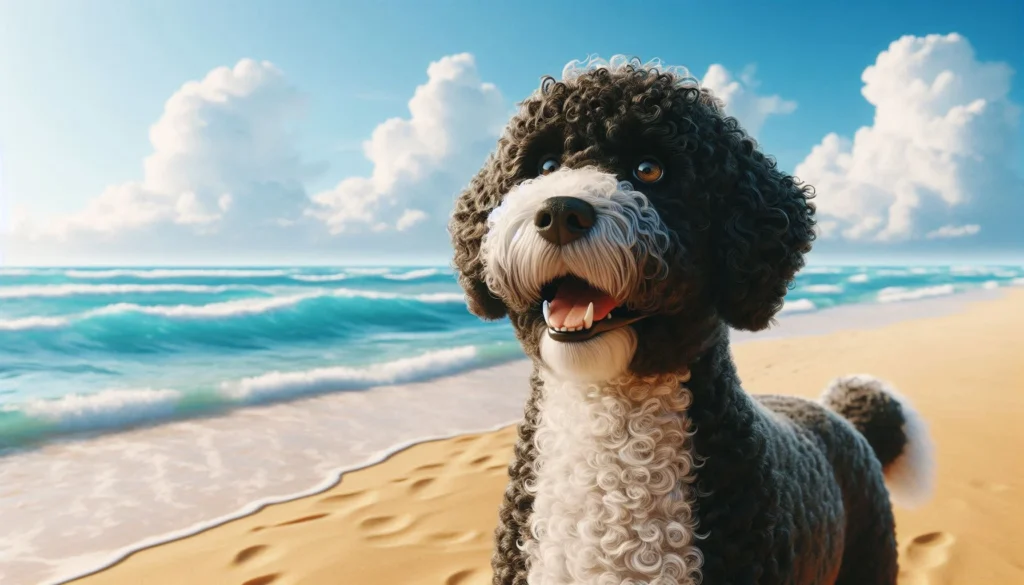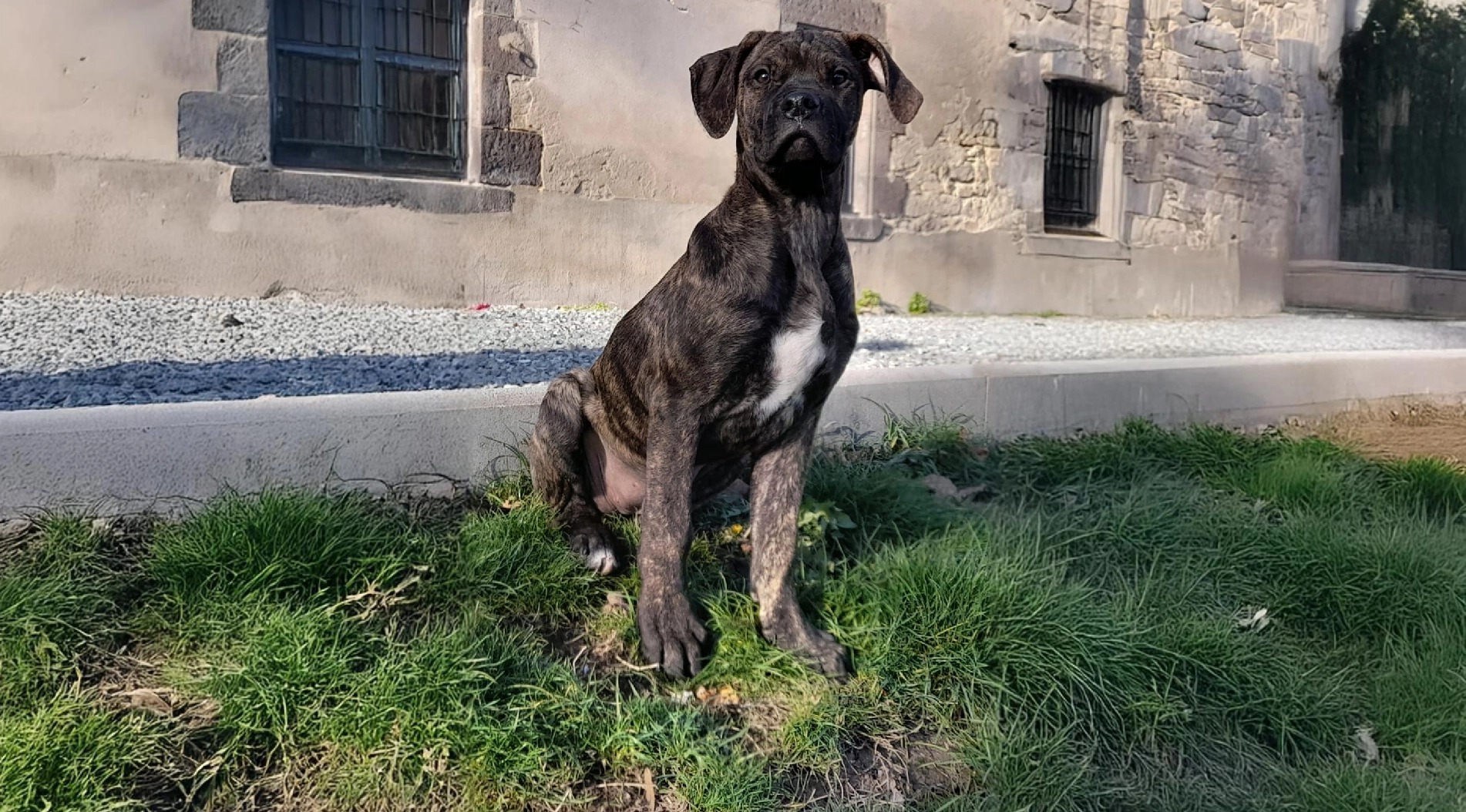Table of Contents
Spanish Water Dog Breed
The Spanish Water Dog (Perro de Agua Español) is a versatile, hardworking breed known for its distinctive curly coat and boundless energy. Originally bred as a herding and waterfowl retriever, this dog has gained popularity among dog enthusiasts for its intelligence, loyalty, and adaptability. Whether you’re looking for a working dog, a companion for outdoor adventures, or a family pet, the Spanish Water Dog could be an ideal choice. This breed stands out for its unique combination of agility, trainability, and affectionate nature, making it a favorite among those who appreciate an active and engaging canine companion.
History and Origin

The Spanish Water Dog has a rich history that traces back to the Iberian Peninsula, where it has been an essential part of rural life for centuries. Although the exact origins are somewhat unclear, it’s believed that the breed has been around for over 1,000 years, possibly introduced by the Moors during their occupation of Spain.
Originally, the Spanish Water Dog was primarily used by shepherds for herding livestock, particularly sheep and goats. Its excellent swimming ability also made it valuable for retrieving in water, hence the name “Water Dog.” The breed’s versatility meant it was often employed in various tasks, from assisting fishermen with their nets to guarding property.
In the 1970s, the breed was rediscovered by Spanish dog enthusiasts who began to standardize and promote it. The Spanish Water Dog was officially recognized by the Royal Canine Society of Spain in 1985 and later by the American Kennel Club in 2015.
Physical Characteristics

The Spanish Water Dog is a medium-sized, well-proportioned breed with a sturdy and athletic build. Here’s a closer look at its physical characteristics:
- Size: Males typically stand between 17.5 to 20 inches tall at the shoulder, while females are slightly smaller, ranging from 15.75 to 18 inches. Their weight generally falls between 31 to 49 pounds, depending on gender and individual build.
- Coat Type: One of the most distinctive features of this breed is its curly, woolly coat. The coat is waterproof, which is ideal for the breed’s original roles. It requires regular maintenance to prevent matting but should not be brushed out, as this can damage the natural curls.
- Colors: The coat comes in a variety of solid colors, including black, brown, beige, and white. It can also be bi-colored, combining these shades. The coat color can change as the dog ages, often lightening or darkening slightly.
- Distinctive Features: Besides its coat, the Spanish Water Dog has a robust, compact body with a slightly rounded skull, a well-developed muzzle, and expressive, almond-shaped eyes that often match the coat color. Its tail is traditionally docked in Spain, though this practice is less common in other countries.
Temperament and Personality
The Spanish Water Dog is known for its lively, affectionate, and intelligent nature. This breed thrives on human interaction and is deeply loyal to its family. Here are some key aspects of its temperament:
- Intelligence: The breed is exceptionally smart and quick to learn, which makes training relatively easy for experienced dog owners. However, their intelligence also means they need regular mental stimulation to prevent boredom.
- Loyalty and Affection: Spanish Water Dogs form strong bonds with their owners and can be somewhat reserved around strangers. They are known to be protective of their family, which makes them excellent watchdogs.
- Energy Level: This is an active breed that requires plenty of exercises. They enjoy activities such as running, swimming, and playing fetch. Without sufficient physical activity, they may become restless and develop behavioral issues.
- Interaction with Children and Other Animals: Spanish Water Dogs are generally good with children, especially when raised with them. They can also get along well with other dogs and pets, though early socialization is essential to ensure they are well-adjusted.
Health and Lifespan
Like all breeds, the Spanish Water Dog is prone to certain health issues, although it is generally considered a healthy and robust breed. Common health concerns include:
- Hip Dysplasia: A genetic condition that affects the hip joints, leading to arthritis or lameness in severe cases. Regular vet check-ups and maintaining a healthy weight can help manage this condition.
- Progressive Retinal Atrophy (PRA): This is an inherited eye disorder that can lead to blindness. Responsible breeders test for PRA to reduce the risk in their breeding lines.
- Allergies: Some Spanish Water Dogs may develop skin allergies, often due to environmental factors or diet. Regular grooming and a balanced diet can help manage these issues.
Lifespan: The average lifespan of a Spanish Water Dog is between 12 to 14 years. To ensure a long and healthy life, regular veterinary care, a nutritious diet, and plenty of exercises are crucial.
Care and Grooming

Caring for a Spanish Water Dog requires attention to both their physical and mental needs. Here’s how to keep your Spanish Water Dog in top condition:
- Grooming: The breed’s curly coat requires specific grooming techniques. Regular trimming is necessary to keep the coat manageable, but it should not be brushed. The coat can be clipped annually, typically in the spring. Owners should also check for mats and debris regularly and bathe the dog when needed.
- Exercise: Spanish Water Dogs are active and energetic, needing at least an hour of vigorous exercise daily. This can include walks, playtime in a secure yard, or engaging in dog sports like agility or herding trials.
- Diet: A balanced diet is essential for maintaining the health of your Spanish Water Dog. High-quality commercial dog food, either dry or wet, is recommended, supplemented with fresh meats and vegetables. Portion control is important to prevent obesity, especially given the breed’s propensity for joint issues.
Training and Socialization
Training a Spanish Water Dog can be a rewarding experience due to their high intelligence and eagerness to please. However, it requires consistency, patience, and a firm yet gentle approach. Here are some tips:
- Start Early: Begin training and socialization as early as possible, ideally when the dog is still a puppy. Early exposure to different environments, people, and other animals will help prevent shyness or aggression later on.
- Positive Reinforcement: Use positive reinforcement techniques such as treats, praise, and play to encourage good behavior. Harsh methods are not recommended, as this breed is sensitive and may become fearful or anxious.
- Mental Stimulation: In addition to physical exercise, Spanish Water Dogs need mental stimulation to stay happy. Puzzle toys, obedience training, and interactive games can help keep their minds sharp.
- Socialization: Regular socialization with other dogs and people is crucial. Group training classes, dog parks, and organized playdates can help your Spanish Water Dog become a well-rounded and confident adult.
Suitability as a Family Pet

The Spanish Water Dog can be an excellent family pet, provided its needs are met. Here’s what you should consider:
- Living Environment: While they can adapt to various living environments, including apartments, Spanish Water Dogs do best in homes where they have access to a yard or nearby parks for regular exercise.
- Energy Levels: Their high energy levels make them suitable for active families who enjoy outdoor activities. They may not be the best fit for sedentary households or individuals who cannot commit to daily exercise.
- Children and Pets: Spanish Water Dogs typically do well with children and can coexist peacefully with other pets, especially if they are introduced at a young age. Their herding instincts might lead them to try to herd young children or smaller animals, so supervision is recommended.
Fun Facts and Trivia
- Dual Purpose: The Spanish Water Dog was historically a dual-purpose breed, excelling both as a herding dog and a water retriever. This versatility is a testament to its adaptability and intelligence.
- National Treasure: In Spain, the Spanish Water Dog is considered a national treasure, deeply embedded in the country’s rural culture and traditions.
- Curly Coat: Unlike many other curly-coated breeds, the Spanish Water Dog’s coat is naturally corded and should not be brushed out, which is unique among dog breeds.
Dog Breeds Similar to the Spanish Water Dog



- Portuguese Water Dog: Like the Spanish Water Dog, the Portuguese Water Dog has a curly, waterproof coat and a history of working in aquatic environments. They are intelligent, energetic, and make excellent family pets.
- Poodle (Standard and Miniature): Poodles, particularly the Standard Poodle, share a similar coat type and high intelligence. They are also versatile dogs used in various roles, from hunting to performing in dog sports.
- Lagotto Romagnolo: This Italian breed is another curly-coated water dog, historically used for truffle hunting. The Lagotto Romagnolo is affectionate, smart, and requires similar grooming and exercise as the Spanish Water Dog.
Conclusion
The Spanish Water Dog is a fascinating breed that offers a perfect blend of intelligence, loyalty, and energy. Whether you’re looking for a hardworking dog for herding, a reliable companion for outdoor adventures, or a loving family pet, this breed has something to offer. With proper care, training, and socialization, the Spanish Water Dog can be a delightful addition to the right household. If you’re considering adding one to your family, be sure to research thoroughly and ensure you’re prepared for the commitment.
FAQ
Is the Spanish Water Dog a dangerous dog?
No, the Spanish Water Dog is not a dangerous dog. They are known for their loyalty and protective nature, but they are not aggressive. Proper training and socialization from a young age are important to ensure they are well-behaved and friendly with people and other animals.
Is the Spanish Water Dog the best guard dog to protect my family?
While the Spanish Water Dog is protective and makes an excellent watchdog, it is not typically classified as a guard dog. They will alert you to strangers and unusual activity, but they are not bred for protection work. They are better suited as a family companion who can also keep an eye on the home.



